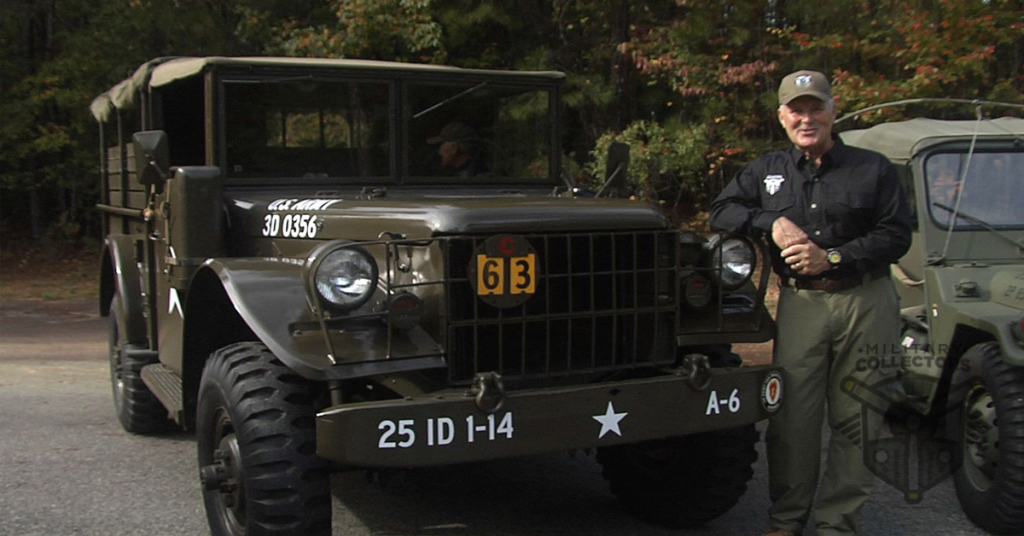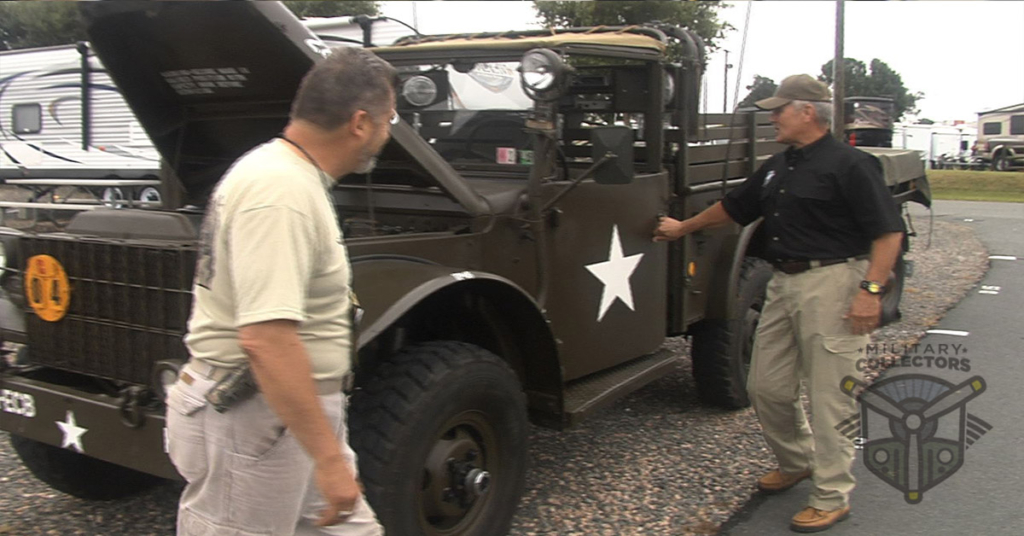
The Dodge M37 – Three-Quarter Ton Four Wheel Drive Truck
The Dodge M37 three-quarter ton truck is a rugged military vehicle that did its part and made a big difference for Uncle Sam. It was put into service during the Korean War and became indispensable thanks to its multipurpose usability. Despite its slower speeds, every branch of the military adopted this tactical utility vehicle.
This vehicle should look highly familiar, since people have seen it in military movies and television shows. The truck has the large head, large 9 x 16 black rubber tires, and is painted olive drab with the mandatory white star centered on both door panels. It’s a large pick-up truck with the open-air bed often covered by a tarp canopy.
The Dodge M37 made its debut on the assembly line in 1951. There were over 115,000 units of the M37 made over the next eighteen years. The M37 three-quarter ton truck was part of a line of tactical vehicles based on the G502 WC series of Dodge vehicles used in World War II. The old WC line was easily adapted to produce the M37 three-quarter ton truck. Because the same assembly line and many of the same parts were used, the manufacturing cost for the M37 was lower.
Better yet, the vehicle reflected lessons learned the hard way in World War II. Many of the kinks and drawbacks from the old Dodge WC line were corrected when the M37 was being designed. Major improvements include a waterproof ignition system, better weather protection, and the ¾ ton truck was built to be able to ford high waters for crossing streams and rivers. The M37 was in every way a sign of improvement in manufacturing made possible by American wartime industrial ingenuity.
The basic frame of the truck was taken from Dodge’s Model T245. The truck has an L-head with a 6-cylinder engine with 58.2 kilowatts of power at a maximum rate of 3,200 rpm. The oil capacity is 6 quarts, with a 25 quarts capacity for the radiator. The fuel system accommodates 24 gallons and the transmission is a 4-peed synchro-shift.
The M37 truck weighs nearly 5,700 pounds without the optional winch. With the winch, it’s nearly an even 6,000 pounds. Its cruising speed is 45 mph with a maximum speed of 55. The 24 gallon fuel tank burns at a fuel efficiency averaging 6 miles to the gallon, with a maximum range of 150 miles before refueling is required.
The Dodge M37 ¾ ton truck quickly replaced other military vehicles based on the Kaiser M715 and Dodge M880 series, which were originally civilian commercial vehicles. The M37 came along as the alternative that had four-wheel drive, was much sturdier and tougher, and could withstand the extensive wear and tear demanded of vehicles by combat zones like Korea. Its strong yet narrow frame made it the ideal vehicle for scaling rocky slopes, passing over streams and rivers, and squeezing through narrow passageways. Keep in mind that the Korean peninsula is a very mountainous place with many cliffs, valleys, and waterways.

Military Collector Ranking
- Collectability: ★★★☆☆
- Rarity: ★★☆☆☆
- Est Value: $25,000 – $50,000
Vehicle Specifications
- Weight: 5,917 lb (2,684 kg)
- Produced: 1951-1968
- Engine: Dodge T-245 78 hp (58 kW)
- Speed: 55 mph (89 km/h)
- Number built: 115,838
Battle Tested: M37 Variations
The M43 ambulance – The M43B1 was an ambulance specially fitted to be able to carry four patient litters, or six to eight passengers sitting upright. The four litter bunks could be folded up and latched to the wall to accommodate upright passengers on bench-style seating. Thousands of these were used to transport wounded soldiers to field hospitals and aid stations between 1951 and the ceasefire in 1953.
The M201 telephone maintenance vehicle – Also known as the V41 Telephone Installation Light Maintenance and Cable Splicing Truck, this vehicle was mounted with a winch and spotlight for repairing cables, telephone poles, and other communications infrastructure.
The XM132 bomb service truck – This variation of the Dodge M37 was outfitted with an open air back and an arch-shaped metal cage for transporting bombs and other live ordnance.
The M42 command truck – The back was outfitted to make this vehicle a mobile office, including curtains, windows, interior lights, and a folding desk table.
The M56 tool truck – The M56 Chassis was mounted with an industrial winch and heavier suspension. This was a heavy duty maintenance vehicle and was used to build crash trucks for Navy and Air Force research.
The R2 airfield fire engine – This fire truck was often mounted with a winch, water tank, and fire hose. Not surprisingly, it was painted bright red.
The V126 radar truck – The large satellite dish on the back makes this variation hard to ignore or mistake
The MB2 fire and rescue truck – The MB2 was similar to the R2, though this vehicle was used for “forcible entry” rescues requiring the vehicle to crash through walls.
The M152 utility truck – The M152 was extensively used by the Canadian military to haul tools and special equipment.

